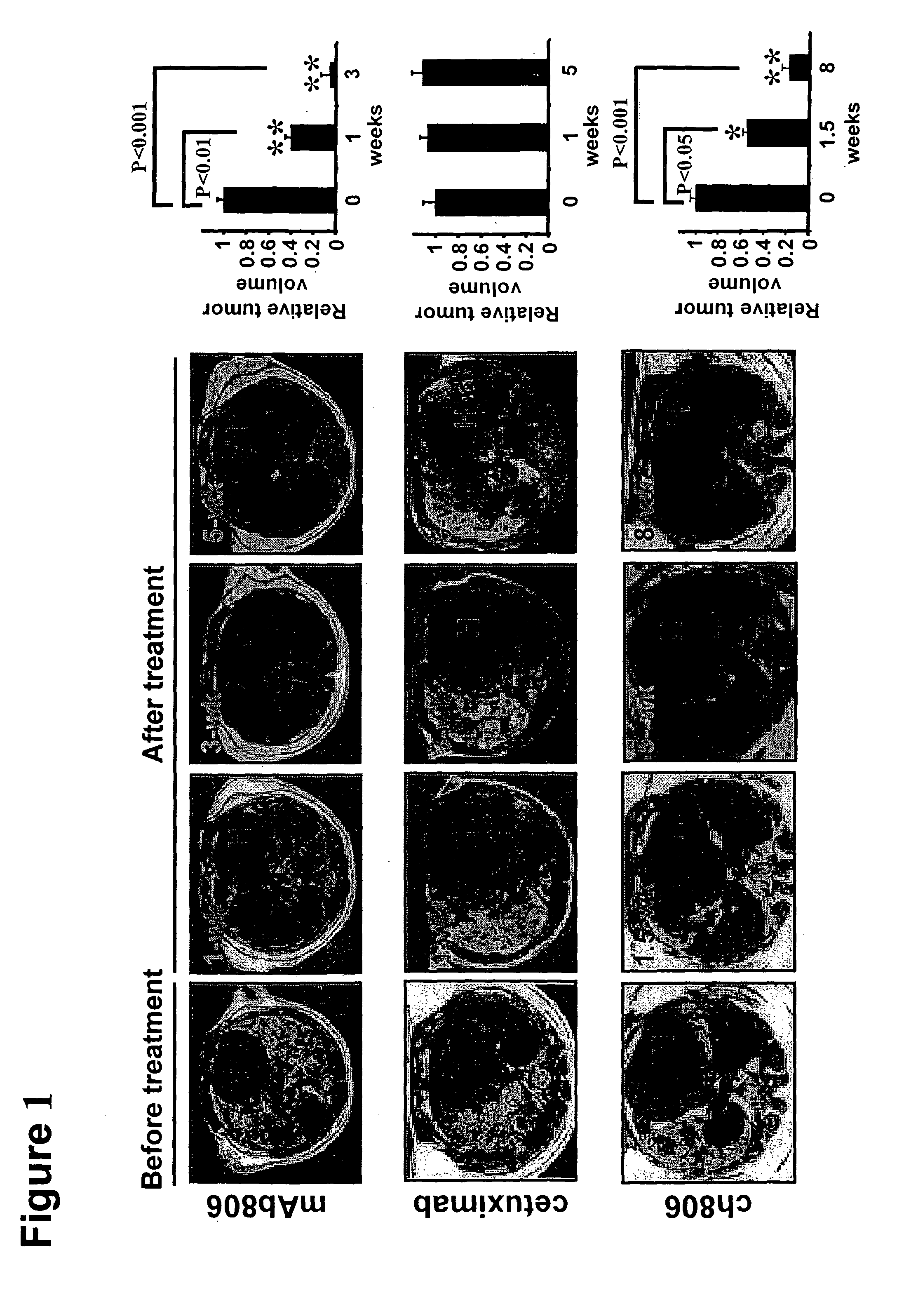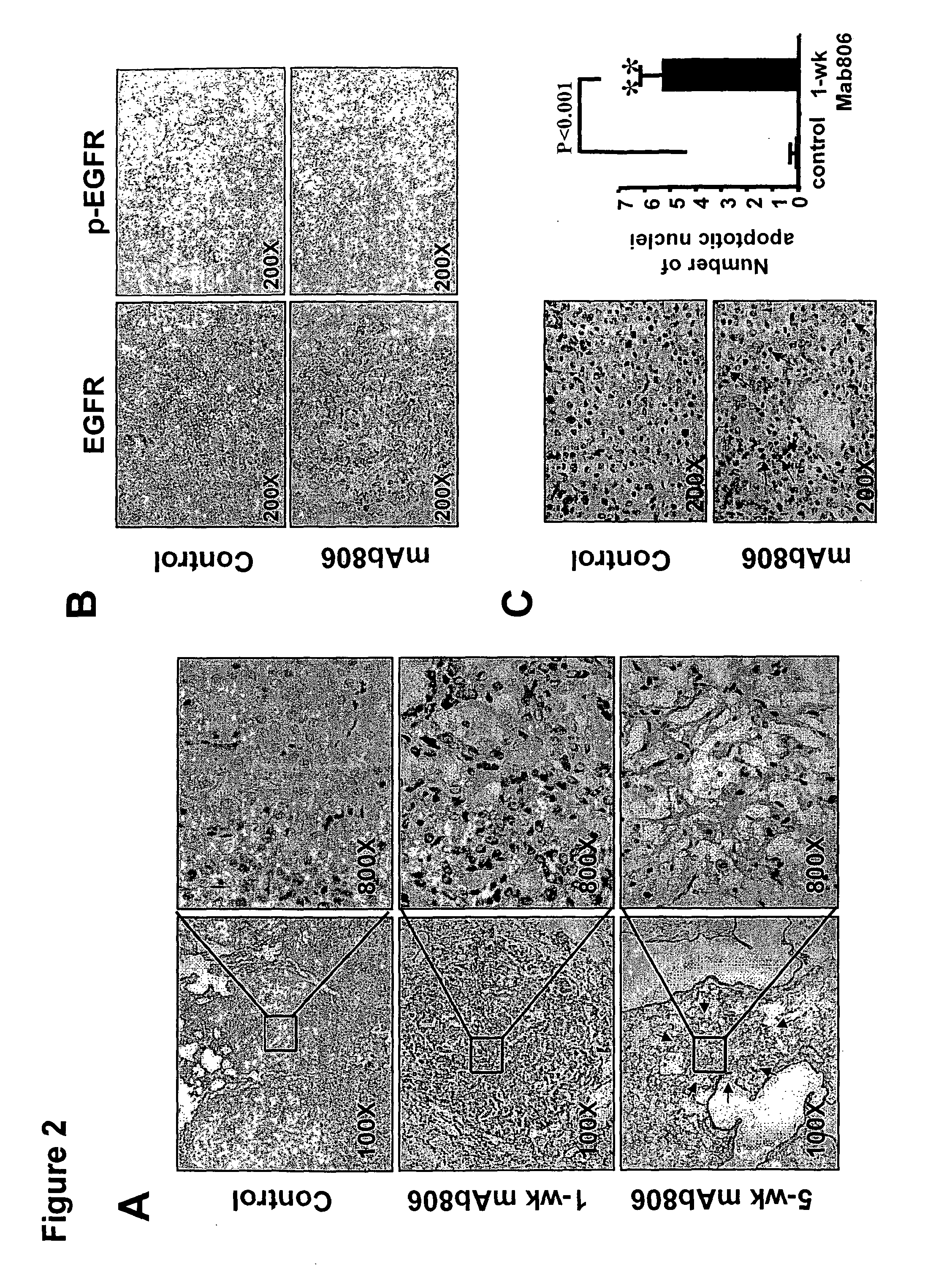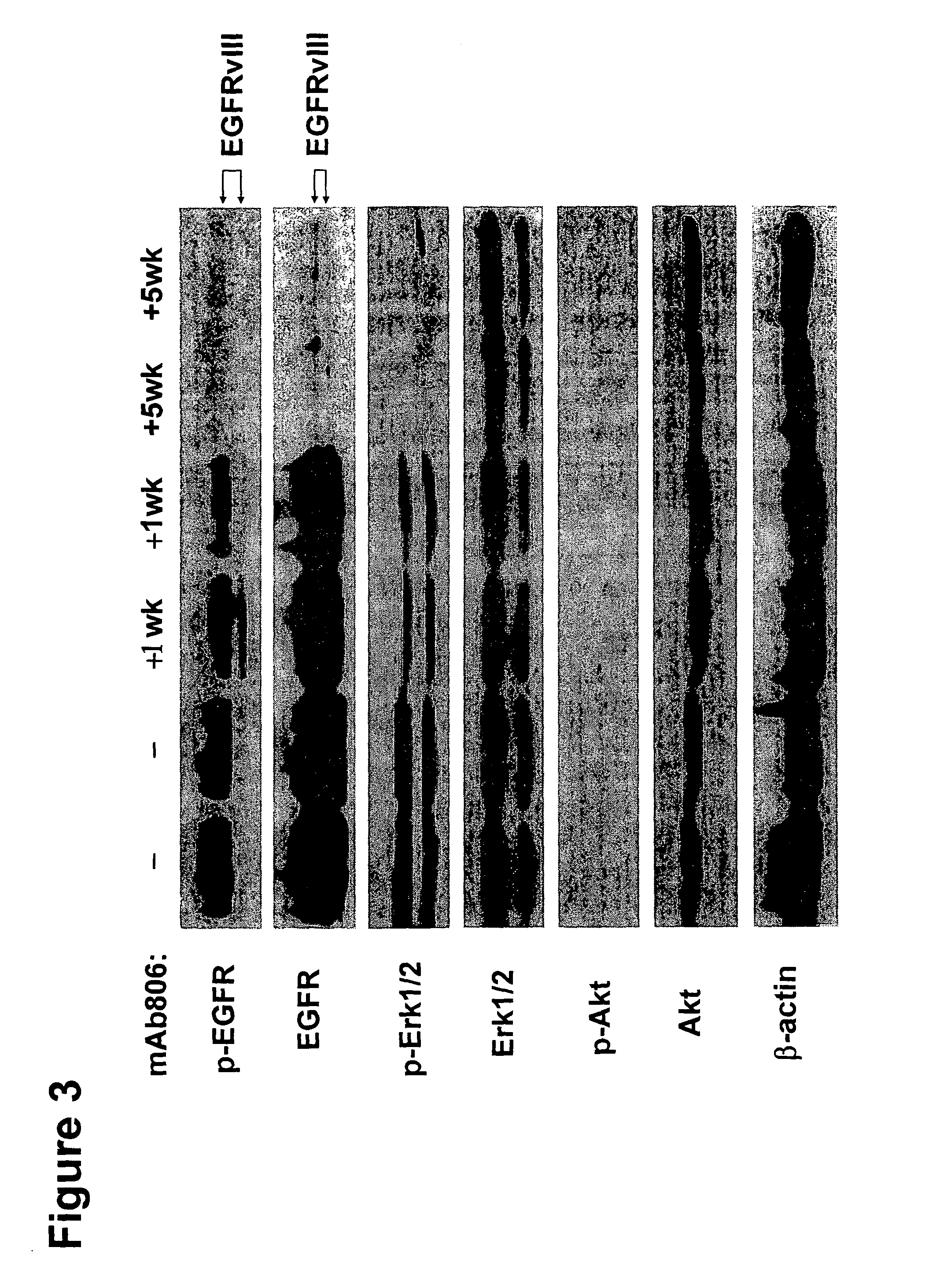Use of Anti-EGFR antibodies in treatment of EGFR mutant mediated disease
a technology of egfr and anti-egfr antibodies, which is applied in the field of treatment of egfr-mediated disease, to achieve the effect of reducing egfr-mediated tumor growth
- Summary
- Abstract
- Description
- Claims
- Application Information
AI Technical Summary
Benefits of technology
Problems solved by technology
Method used
Image
Examples
example 1
Therapeutic Anti-EGFR Antibody 806 Generates Responses in Murine De Novo EGFR Mutant-Dependant Lung Carcinomas
[0082]Activating epidermal growth factor receptor (EGFR) mutations occur in human non-small cell lung cancer (NSCLC), with 5% of human lung squamous cell carcinomas having EGFRvIII mutations and 10-30% of lung adenocarcinomas having EGFR kinase domain mutations. An EGFR targeting monoclonal antibody, mAb806, recognizes a conformational epitope of wild type (wt) EGFR as well as the truncated EGFRvIII mutant. To explore the anticancer spectrum of this antibody for EGFR targeted cancer therapy, mAb806 was used to treat genetically engineered mice with lung tumors that were driven by either EGFRvIII or EGFR kinase domain mutations. Our results demonstrate that mAb806 is remarkably effective in blocking EGFRvIII signaling and inducing tumor cell apoptosis and, thus resulting in dramatic tumor regression in the EGFRvIII driven murine lung cancers. Another EGFR-targeting antibody, ...
example 2
806 Antibody Leads to Tumor Regression in Lung Tumors with EGFR T790M Mutation
[0133]Mice expressing the human EGFR secondary mutation T790M were generated. Mab806 was delivered into mice bearing lung tumors through I.P. injection at daily 0.5 mg per dose per mouse for 4 weeks. Serial MRI scanning of treated mice was performed at the end of 2 and 4 weeks of treatment as described below.
Generation of the Tet-op-hEGFR T790M-L858R / CCSP-rtTA Mouse Cohort
[0134]To generate mice with inducible expression of human EGFR T790M-L858R mutant, we constructed a 4.7-kb DNA segment consisting of seven direct repeats of the tetracycline (tet)-operator sequence, followed by EGFR T790M-L858R cDNA and ?-globin polyA. The construct was injected into FVB / N blastocysts and progeny were screened using PCR strategy. Fifteen Tet-op-hEGFR T790M-L858R founders were identified and then crossed to CCSP-rtTA mice (an allele been shown specifically targeting the expression of the reverse tetracycline trans-activato...
PUM
 Login to View More
Login to View More Abstract
Description
Claims
Application Information
 Login to View More
Login to View More - R&D
- Intellectual Property
- Life Sciences
- Materials
- Tech Scout
- Unparalleled Data Quality
- Higher Quality Content
- 60% Fewer Hallucinations
Browse by: Latest US Patents, China's latest patents, Technical Efficacy Thesaurus, Application Domain, Technology Topic, Popular Technical Reports.
© 2025 PatSnap. All rights reserved.Legal|Privacy policy|Modern Slavery Act Transparency Statement|Sitemap|About US| Contact US: help@patsnap.com



